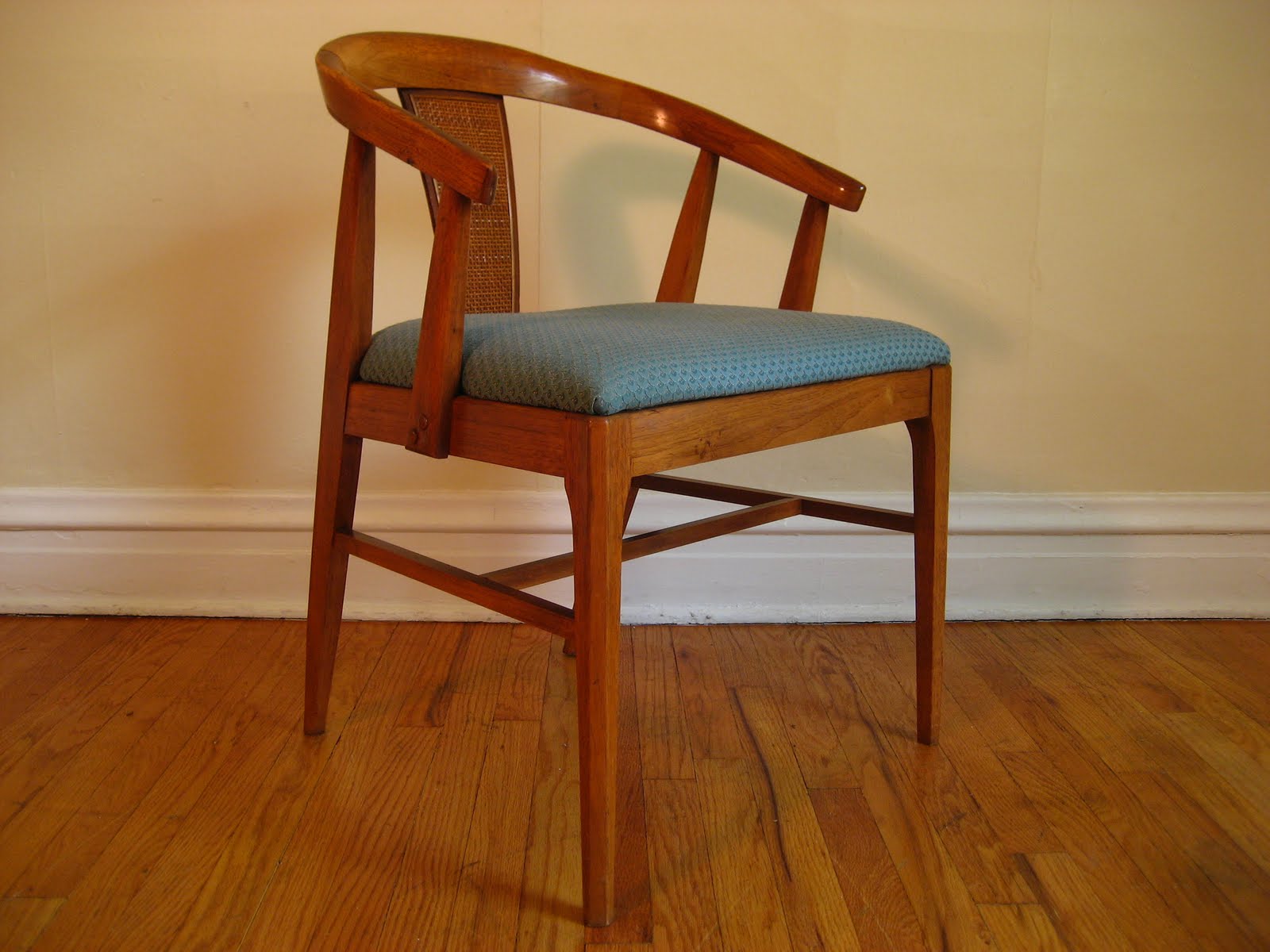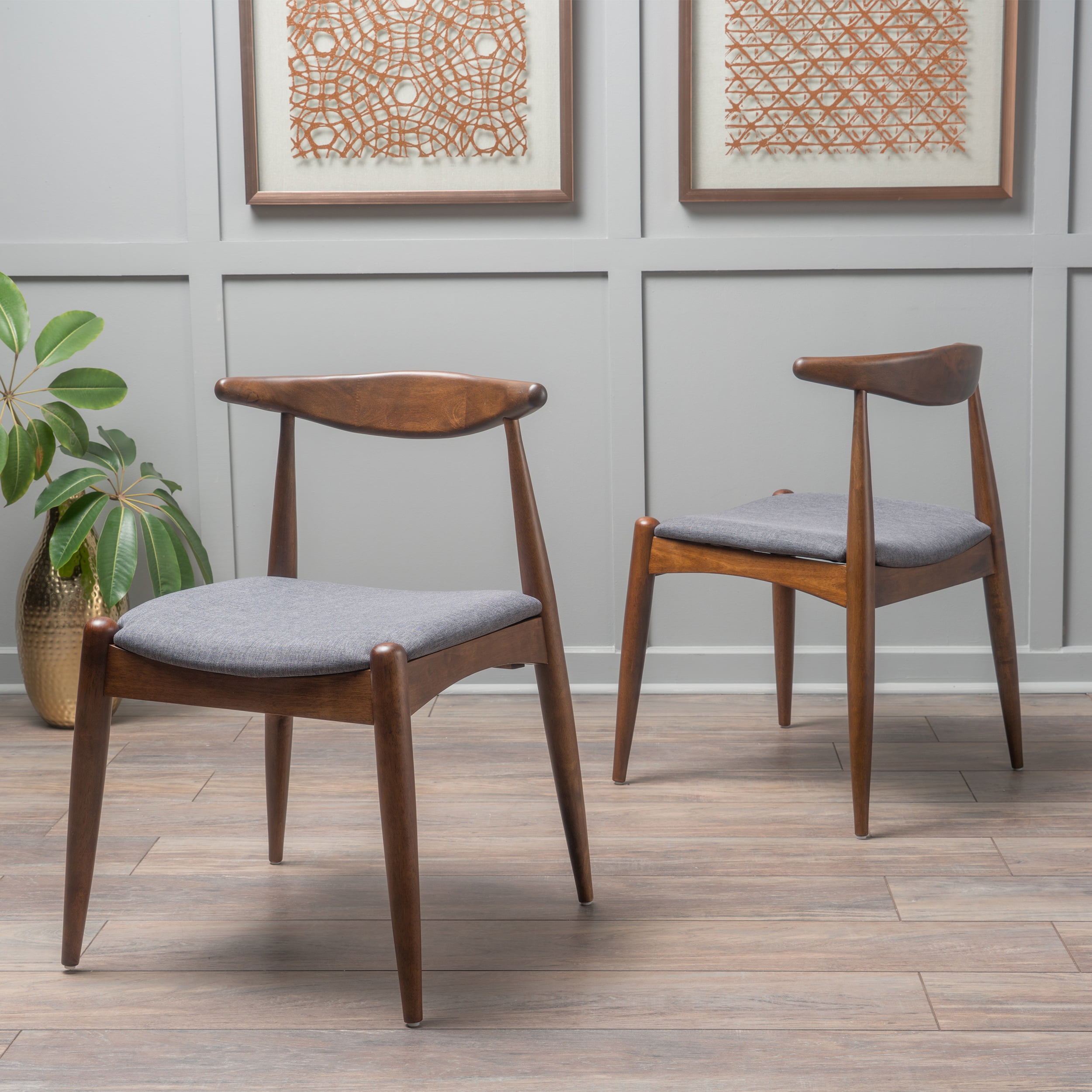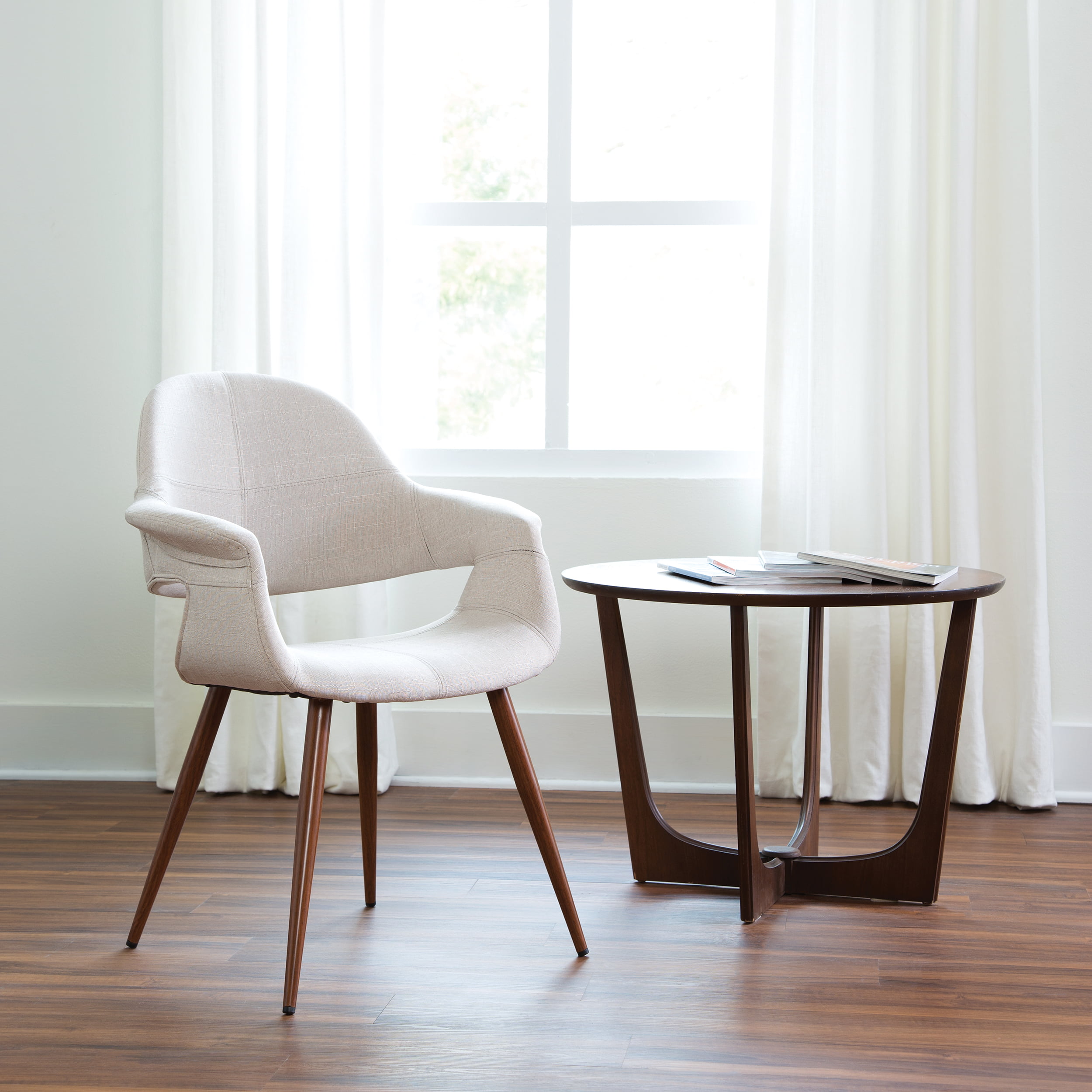Design & Style Variations of Mid-Century Dining Chairs with Arms

Mid-century modern dining chairs with arms represent a fascinating evolution in furniture design, reflecting the changing tastes and technological advancements of the era. From the streamlined elegance of the 1950s to the bolder experimentation of the 1960s, these chairs offer a glimpse into the stylistic shifts that defined the period. Understanding these variations allows for a deeper appreciation of their enduring appeal and lasting influence on contemporary design.
Evolution of Design Features, Mid century dining chair with arms
The design of mid-century dining chairs with arms underwent a significant transformation throughout the period. The early 1950s saw a preference for clean lines, simple forms, and organic curves inspired by Scandinavian design. Think gently sloping backs, tapered legs, and understated armrests. As the decade progressed, a greater emphasis on functionality and mass production led to more streamlined designs. By the 1960s, bolder shapes and more expressive forms emerged, reflecting the growing influence of Pop Art and Space Age aesthetics. Geometric patterns, vibrant colors, and unconventional materials became more prevalent. The 1970s saw a softening of these styles, with a return to some of the organic curves of the earlier period, but often with a more eclectic and personalized approach.
Material Usage in Mid-Century Dining Chair Designs
The choice of materials significantly impacted the aesthetic and overall feel of mid-century dining chairs with arms. Wood remained a dominant material, with various types reflecting different design philosophies. Teak, with its rich warm tones and durability, was popular for its association with Scandinavian modernism and its suitability for both indoor and outdoor use. Walnut, with its darker, more luxurious appearance, was often chosen for more formal settings. Birch, known for its lighter color and affordability, became a staple in mass-produced designs. Upholstery fabrics also played a crucial role. Simple, durable textiles like linen and cotton were common, often in muted natural tones. However, bolder patterns and more vibrant colors appeared in later designs, reflecting the growing influence of Pop Art and a more playful approach to interior design. Leather, while less common, offered a luxurious alternative, particularly in more upscale designs.
Iconic Design Elements of Mid-Century Dining Chairs with Arms
Several key design elements define a mid-century dining chair with arms. Tapered legs, a hallmark of the style, create a sense of lightness and elegance, while curved backs offer ergonomic support and visual appeal. The shape of the armrests, whether subtly curved or more angular, can significantly influence the overall aesthetic. The use of natural materials and a focus on clean lines are also characteristic features.
| Style | Defining Characteristics | Typical Wood | Typical Upholstery |
|---|---|---|---|
| Scandinavian Modern | Simple lines, organic curves, tapered legs, light-colored wood | Birch, Beech | Linen, wool |
| Danish Modern | Refined craftsmanship, elegant curves, often features sculpted wood | Teak, Rosewood | Leather, wool |
| Mid-Century Modern (American) | Clean lines, tapered legs, often uses molded plywood | Walnut, Birch | Vinyl, cotton |
| Space Age Modern | Geometric shapes, bold colors, use of plastics and other unconventional materials | Occasionally wood, often plastic or metal | Vinyl, acrylic fabrics |
Color Palettes in Mid-Century Dining Chairs with Arms
The color palettes associated with mid-century dining chairs with arms varied significantly across the decades. The 1950s often featured muted, natural tones such as beige, cream, and light browns, reflecting the influence of Scandinavian design and a preference for understated elegance. As the decade progressed, bolder colors like mustard yellow, teal, and avocado green began to appear, reflecting a growing interest in brighter, more expressive hues. The 1960s saw an explosion of color, with vibrant shades like orange, turquoise, and bright red becoming increasingly common, reflecting the influence of Pop Art and a more playful approach to design. The use of these colors was often complemented by the introduction of patterned fabrics. The 1970s saw a slight softening of this trend, with a return to more earth tones, but with a greater emphasis on individual expression and eclectic combinations. These shades often played off of the wood tones of the chairs themselves.
Manufacturing & Materials of Mid-Century Dining Chairs with Arms: Mid Century Dining Chair With Arms

Mid-century modern dining chairs with arms represent a fascinating blend of design aesthetics and manufacturing techniques. Their production, spanning from the mid-20th century to contemporary recreations, showcases a rich history of material innovation and evolving manufacturing processes. Understanding these aspects is key to appreciating the enduring appeal and varied qualities of these iconic pieces.
Mid century dining chair with arms – The manufacturing of mid-century dining chairs with arms involved a combination of craftsmanship and industrial processes. Traditional methods often emphasized hand-carving and joinery for wooden frames, while modern techniques incorporate more automated processes like CNC machining for greater precision and efficiency. The choice of materials significantly impacted both the aesthetic and functional aspects of the chair, influencing its durability, comfort, and overall cost.
Material Durability and Longevity
The longevity and durability of a mid-century dining chair are directly linked to the materials used in its construction. Solid wood, particularly hardwoods like teak, walnut, and oak, offer exceptional strength and resilience, often lasting for generations with proper care. Plywood, while less expensive, provides a good balance of strength and flexibility, making it a popular choice for chair components. However, plywood’s durability is dependent on the quality of the wood veneers and the adhesive used. Upholstery materials also vary widely in their durability. Leather, while expensive, offers exceptional longevity and develops a unique patina over time. Fabrics, on the other hand, range from relatively short-lived cotton blends to more durable options like linen or high-quality synthetic materials. The choice of materials reflects a balance between cost, aesthetics, and the desired lifespan of the chair.
Innovative Design Solutions for Comfort and Ergonomics
Many mid-century designers prioritized comfort and ergonomics, incorporating innovative solutions into their chair designs. This often involved careful consideration of the chair’s form and dimensions to provide optimal support for the back and seat. For example, the use of molded plywood allowed for the creation of curved seat and backrests that conform to the body’s natural shape. Furthermore, some designs incorporated features like tapered legs for visual appeal and added stability, while others utilized strategically placed padding to enhance comfort without compromising the chair’s clean lines. The integration of these features showcases a design philosophy that balanced functionality with aesthetic appeal.
Environmental Impact of Materials and Manufacturing
The environmental impact of mid-century dining chair production varies depending on the materials and manufacturing processes used. Historically, the use of hardwoods often involved logging practices that had a significant impact on forests. However, the development of sustainable forestry practices and the increasing use of reclaimed or recycled wood has mitigated some of these concerns. The manufacturing processes themselves have also evolved, with modern techniques aimed at reducing waste and energy consumption. The choice of upholstery materials also has environmental implications, with leather production having its own set of ecological considerations and synthetic fabrics often derived from petroleum-based resources. Contemporary manufacturers are increasingly focusing on eco-friendly materials and production methods, reflecting a growing awareness of environmental responsibility.
Popularity, Restoration & Collecting Mid-Century Dining Chairs with Arms

The enduring appeal of mid-century modern dining chairs with arms stems from a potent blend of timeless design principles and a resurgence of appreciation for handcrafted quality. Their clean lines, ergonomic forms, and versatile styles seamlessly integrate into both vintage-inspired and contemporary interiors, making them a sought-after addition to homes and design-conscious spaces. This popularity is further fueled by the growing interest in sustainable and ethically sourced furniture, with many opting for restored vintage pieces over mass-produced alternatives.
The versatility of mid-century dining chairs with arms is a key factor in their continued popularity. Their designs effortlessly bridge the gap between different interior styles, complementing minimalist aesthetics as readily as they enhance more eclectic settings. This adaptability, coupled with their often durable construction, ensures their longevity and continued relevance in the ever-evolving world of interior design.
Restoring and Refinishing Mid-Century Dining Chairs with Arms
Restoring a vintage mid-century dining chair involves a meticulous process requiring patience and attention to detail. The goal is to preserve the chair’s original character while addressing any damage or wear. This process often involves careful cleaning, repair of broken parts, and refinishing to restore the original finish or apply a new protective layer.
- Assessment and Preparation: Begin by thoroughly inspecting the chair for damage, noting any cracks, loose joints, or significant wear to the upholstery or finish. Protect the surrounding area with drop cloths and wear appropriate safety gear like gloves and eye protection.
- Disassembly (if necessary): If the chair requires extensive repair or refinishing, carefully disassemble it, noting how each part fits together for easier reassembly. Take photographs to aid in the process.
- Cleaning: Clean the chair using appropriate cleaning solutions for the material. For wood, a gentle solution of mild soap and water may suffice. For upholstery, consult a professional cleaning guide specific to the fabric type.
- Repair: Address any structural issues, such as loose joints or broken parts. Wood glue and clamps are often sufficient for minor repairs. For more significant damage, consider consulting a professional furniture restorer.
- Refinishing: Sand the wood surface smoothly, taking care not to remove too much material. Apply a suitable wood stain or finish, following the manufacturer’s instructions. Multiple thin coats are generally better than one thick coat. Allow ample drying time between coats.
- Upholstery (if needed): If reupholstering is required, choose a fabric that complements the chair’s style and complements the overall interior design. Carefully measure the existing upholstery before purchasing new fabric. Professional upholstery services are often recommended for complex designs.
- Reassembly: Once all repairs and refinishing are complete, carefully reassemble the chair, ensuring all joints are secure and stable.
Identifying Authentic Mid-Century Dining Chairs with Arms
Distinguishing genuine mid-century modern chairs from reproductions requires careful observation and a keen eye for detail. Reproductions often lack the subtle nuances and craftsmanship of original pieces.
Knowing what to look for is crucial in the world of vintage furniture collecting. Here are some key indicators to help you identify authentic pieces:
- Construction Quality: Authentic mid-century chairs often exhibit superior joinery and craftsmanship. Look for dovetail joints, mortise and tenon joints, or other high-quality joinery techniques, indicative of skilled craftsmanship.
- Materials: Genuine pieces frequently utilize high-quality materials such as solid wood (teak, walnut, oak), and high-grade upholstery fabrics. Pay close attention to the quality and type of wood used; cheap plywood is often a sign of a reproduction.
- Design Details: Authentic mid-century chairs often feature unique design elements, such as tapered legs, sculpted forms, and distinctive hardware. Compare the chair’s design to known examples of mid-century modern design to verify authenticity.
- Maker’s Marks or Labels: The presence of a maker’s mark or label can be strong evidence of authenticity. Research the maker to verify the legitimacy of the mark.
- Condition and Patina: While not definitive proof, the presence of age-related wear and tear (patina) can be a subtle indicator of authenticity. However, be wary of artificially distressed reproductions.
Rewritten Article on Mid-Century Dining Chairs with Arms
Mid-century modern dining chairs with arms represent a pinnacle of design and craftsmanship. Their enduring appeal lies in their elegant simplicity, ergonomic design, and adaptability to various interior styles. These chairs often feature clean lines, tapered legs, and comfortable armrests, showcasing the era’s focus on functionality and form. Popular materials include solid wood such as teak, walnut, and oak, often complemented by high-quality upholstery. The restoration and collecting of these chairs are increasingly popular pursuits, driven by an appreciation for quality craftsmanship and a desire for sustainable, stylish furniture. Identifying authentic pieces requires a careful examination of construction, materials, design details, and maker’s marks. Proper restoration involves meticulous cleaning, repair, and refinishing, often requiring specialized skills and materials. The resulting piece becomes a cherished heirloom, blending classic design with contemporary living.
